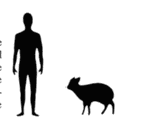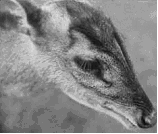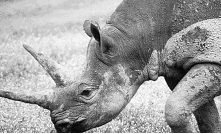|
Current Level |
||||||||||||||
|
|
||||||||||||||
|
Previous Level |
||||||||||||||
|
|
||||||||||||||
|
Figures for this lecture can be accessed by logging onto the course D2L site at https://uwlax.courses.wisconsin.edu/ Comparative Genomics History Mammalian radiations about 65 million years ago 4600-4800 species of today comprise 28 orders including the monotremes, 7 marsupial orders, and 20 placental orders. What protected these and not others from extinction? Comparative anatomy, behavior, physiology, fossils, single molecules. Now can examine parallels between entire genomes to show relationships and divergence. Comparative genomics compares the genomic sequence of different species.
Developing Mammalian Gene Maps Started comparing genetic maps before sequence information was available. All mammals contain about 3 billion bases of DNA arranged in linear order on chromosomes Ranges from 2n=6 in Indian muntjac to 2n=84 in black rhino
Maps for human, mouse, and over 40 other mammals Methods for developing the maps: § meiotic linkage mapping of markers §contig alignment of clones §Zoo-FISH(figure) Practical Applications of the Maps § animal models for human disease §genomic prospecting §improve domestic animals §explain the physical clustering of gene families §"frozen accident" vs. selective retention §resolve phylogeny of mammalian orders
Limits to the resolution of these types of maps. Sequenced genomes are more powerful.
Comparing Genome Sequences 1. Comparative genomics examines relatedness of organisms. Related species have synteny: conserved gene locations within large blocks of the genome For example, the dog genome has stretches of DNA sequence in common, 45% of which is "noncoding" and not associated with genes at all! Sometimes called syntenic anchors. (figure) 2. Comparative genomics confirms ORF predictions and regulatory elements: For example, mouse and human genes share similar DNA sequence and biological function If we shatter the 23 pairs of human chromosomes into about 150 pieces of varying sizes, we could rearrange to make a mouse genome-- http://www.ornl.gov/hgmis/publicat/tko/06_img.html Newly located genes on human chromosomes can often predict where a closely related gene will be found in the mouse and vice versa
3. Comparative genomics helps in locating disease genes. The first draft of the chimp sequence indicated only a 1.2% difference at the DNA level compared to human DNA sequence. Some of these differences are in genes that when mutated cause disease in humans but not chimps. Perhaps by examining the differences in the two genomes, disease genes can be pinpointed more rapidly.
One Example: The Human-Mouse Homology Map http://www.ncbi.nlm.nih.gov/projects/homology/maps/ Why mouse? 1. Diversity: Divergence in complex genomes from gene duplication About 1% of the mouse genome has duplications that humans do not possess, and vice versa These novel genes may be important in determining species-specific traits and functions
2. Similarity: Mouse and human genes share similar DNA sequence and biological function Newly located genes on human chromosomes can often predict where a closely related gene will be found in the mouse and vice versa
3. Testability: e.g., heritable muscle disorder in mice maps to the mdx gene on the mouse X chromosome; closely analogous to the map location for the X-linked human Duchenne muscular dystrophy gene (DMD) Mutations in the mouse gene produce a less severe muscle disease, but the two gene products have similar fxns in muscle development and maintenance: mouse model for human disease
Citations:
|
|


